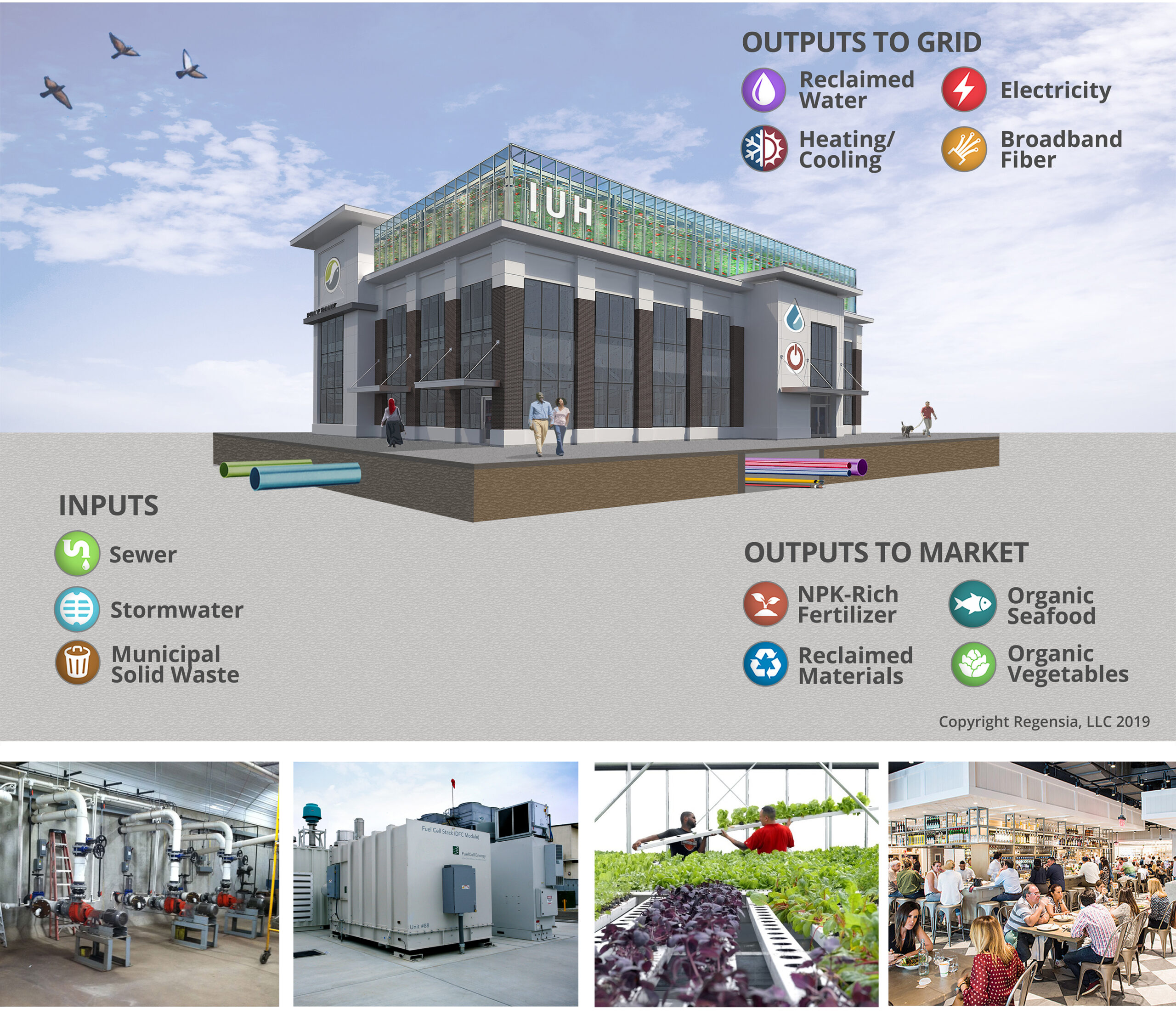RESTORATIVE UTILITY MODELING FOR MIXED-USE DEVELOPMENT | WASHINGTON, DC

Integrated Utility Hub with key component technologies
CLIENT | Private Developer
SITE | 10-acre mixed-use parcel, Washington, DC
____________________
THE CHALLENGE
A private developer acquired a 10-acre parcel in Washington, DC, with plans for a dynamic mixed-use community of nearly one million square feet, including residential, office/retail, a hotel, and a supermarket. The development team wanted to integrate leading-edge Smart City solutions to improve resilience, resource security, and market competitiveness.
OUR ROLE
Regensia’s Joshua Foss was engaged to design and model an Integrated Utility Hub (IUH) tailored to the development’s requirements. The IUH concept included:
- Managing and treating on-site solid and liquid waste, plus importing waste from surrounding areas
- Collecting and treating stormwater to maximize stormwater credit value
- Producing baseload electricity, heat, and recycled water for the site
- Integrating four-season food production technologies
- Featuring public educational components to showcase innovation
Working with architects, planners, and engineers, Regensia also assessed siting solutions, demonstrating that the IUH could be placed underground within a parking structure, freeing above-grade land for residential, retail, and commercial functions.
KEY FINDINGS
- Feasibility confirmed: An IUH can be integrated within a tight urban mixed-use footprint, even underground.
- Stormwater credits maximized: Capture and reuse strategies showed significant financial and environmental benefits.
- Resource self-sufficiency: The IUH could provide baseload energy, water, and waste management while reducing reliance on municipal systems.
- Scalability demonstrated: The system design showed pathways for grid interconnection and replication across other DC developments.
- Public value added: Educational components and visible food systems positioned the IUH as a community amenity, not just hidden infrastructure.
RESULTS & IMPACT
- Positioned the development as a flagship Smart City project, capable of advancing both site and municipal sustainability goals.
- Provided the developer with feasible infrastructure and financial models, enhancing confidence in pursuing advanced utility solutions.
- Opened dialogue with key DC agencies, aligning a private development with broader citywide priorities in resilience, climate action, and regenerative infrastructure.

